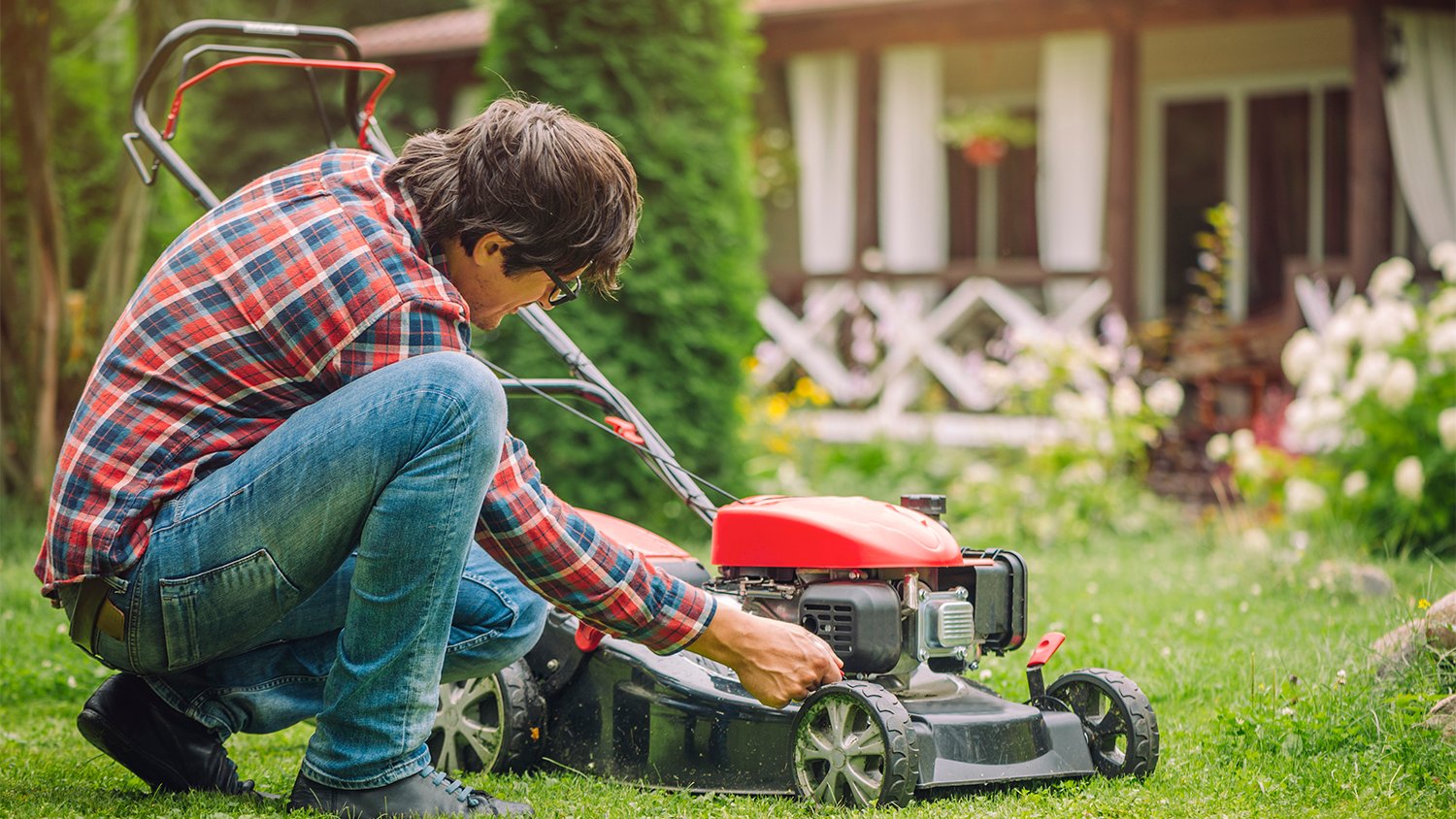
Your total lawn care cost depends on several factors, including the type of service and lawn size. Our guide will cover what you can expect to pay for lawn care.
Yes, it's hot out—but put a pair of long pants on anyway


Thousands of people are in lawn mower accidents each year.
Homeowners should make sure they know how to properly operate a mower.
Always wear safe clothing and remove obstacles from your yard before starting.
It's always best to educate others and lead by example when mowing.
Oh, how many of us love the smell of fresh-cut grass—and the intrinsic rewards that come with a morning (or afternoon) of honest labor. The truth about mowing lawns, though, is that it can be a little dangerous if you aren't in the know about best safety practices.
Learn how to prevent accidents with these seven lawn mower safety tips (plus the surprising stats on lawn mower accidents that'll give you incentive to follow them closely).
Every lawn mower comes with a safety manual. Don't sweat if you can't find yours, because it's likely available online with a quick search. We know it may not read like a great American novel—but it's still the best way to understand the ins and outs of your device.
Nearly every lawn mower instruction manual has a section on preventing lawn mower injuries. Definitely read this section.
Also, keep in mind that operating a push lawn mower can be strenuous exercise for some. If you have any pre-existing health concerns, make sure you check with a doctor before operating a push mower.
Yikes! More than 6,394 Americans are injured each year in lawn mower accidents, according to a study done at Johns Hopkins University. Many of those injuries are severe burns and cuts. By dressing appropriately to mow, you can drastically reduce your risk.
When mowing, you should always wear:
Gloves
Eye protection
Closed-toe shoes
Long pants
Hearing protection such as earplugs or utility earmuffs is also recommended.
Scan your yard and do a quick walkthrough to remove obstacles that could damage your lawn mower or potentially be thrown at you by the blade if you run over them.
Objects to look for include:
Stones
Children's toys
Yard tools
You should also be careful mowing over wet grass. If it just rained, wait until the grass dries to lower the risk of slipping. Mowers don't generally work as well on wet grass, anyway.
Always avoid mowing over wood chips, as well as gravel, stone, mulch, or other terrain that could damage your mower. Even if it's a short distance, it's best to let the mower shut off for a couple seconds to cross an area that isn't grass.
Even mowing for a few minutes in warm weather can increase the temperature of your lawn mower's engine significantly. The metal surrounding it can get very hot, so avoid touching it for at least ten to fifteen minutes.
Similarly, if you need to add gas (or even oil), wait until the engine cools down. Set it in the shade or in your garage or shed for at least twenty minutes to let it cool. (Leave the door open if it's in a small, confined space.)
A hot engine and exhaust fumes can turn a small spill of oil or gas into chemical vapors or a full-blown fire. Better safe than sorry—go cool down with some water or tackle another yard project while the temperature drops.

Regular lawn mower maintenance keeps your device fuel-efficient, effective at cutting grass, and prolongs its life. It also ensures your safety when mowing. This should be one of the first things you do each spring to get your lawn mower ready.
Some basic lawn mower tune-up steps you should take each year (if not every other year):
Change the filters annually.
Replace the blade (every two years is fine).
Properly taken care of, a lawn mower should last 10 years. Ask a local lawn mower tune-up shop in your area for help if needed.
Young children shouldn't mow without adult supervision. Generally speaking, 12 is a good age to pass down the reins and have your children mow. Wait until they're at least 15 or 16 if you own a driving mower. Walk them through best safety practices. Above all else, be a role model they can look up to and pass on your safety tips.
If your lawnmower starts with a key or has a remote starter, keep it away from where children can reach it.
From average costs to expert advice, get all the answers you need to get your job done.

Your total lawn care cost depends on several factors, including the type of service and lawn size. Our guide will cover what you can expect to pay for lawn care.

The average lawn mowing cost runs between $50 and $200 depending on factors like your lawn’s size and shape. Here’s what to expect.

The cost to renovate your lawn depends on the extent of the damage. Our guide will show you how much lawn renovation costs.

Dethatching can help keep your lawn healthy, but it also comes with potential drawbacks. Learn more about the pros and cons of dethatching your lawn.

Spot common warning signs of too much nitrogen in the lawn and learn how to fix damage from overfertilizing or pet urine to keep grass green and healthy.

Bermuda grass and Kentucky bluegrass thrive under different conditions. Find out more about Bermuda grass vs. Kentucky bluegrass.